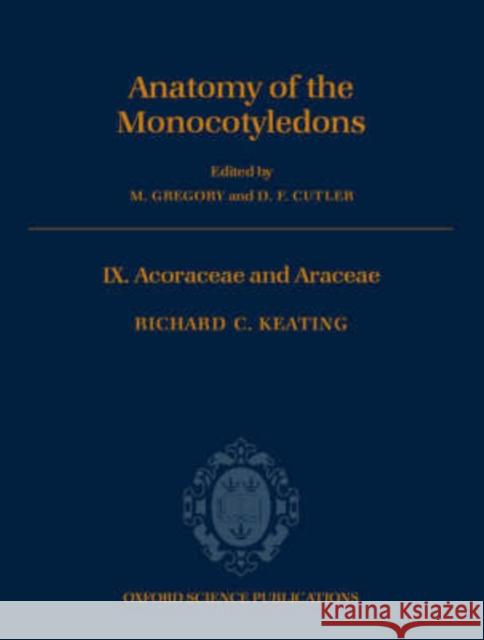The Anatomy of the Monocotyledons: Volume IX: Acoraceae and Araceae » książka
The Anatomy of the Monocotyledons: Volume IX: Acoraceae and Araceae
ISBN-13: 9780198545354 / Angielski / Twarda / 2003 / 344 str.
This volume treats the microscopic anatomy of vegetative organs of two monocotyledonous flowering plant families. Observations are included for Acorus, sole genus of Acoraceae, and nearly all of the 106 genera of the family Araceae, now including the duckweeds as the subfamily Lemnoideae.
The introduction reviews all aspects of morphology and anatomy of the families and a variety of other topics including biogeography, the paleobotanical record, economic uses, chemistry and toxic properties. Highlights of the vegetative anatomical literature are reviewed from about 1000 references included in the bibliography. A chapter illustrated by photomicrographic figures defines the characters, character states and their text codes.
Next follows the heart of the work, parallel anatomical descriptions of the genera. They are accompanied by 855 light photomicrographic figures, arranged in 115 plates that illustrate nearly every genus. Following each tribal or generic treatment is a list of specimens examined and taxonomic notes highlighting useful comparisons. Each treatment concludes with references to anatomical works treating that genus, and selected additional references to non-anatomical literature.
The order of generic treatments of Araceae is based on a revised classification that harmonizes the anatomical data with current findings from molecular genetics. Other recent family infrastructural schemes are presented for comparison There is a discussion of evolutionary trends and systematics, and a summary of current conclusions regarding the appropriate ordinal position of the family.
Following the anatomical presentation are lists of genera with certain diagnostic features. As with the generic descriptions, the lists are comprehensive for leaf and petiole materials and less so for stem and root tissues.











